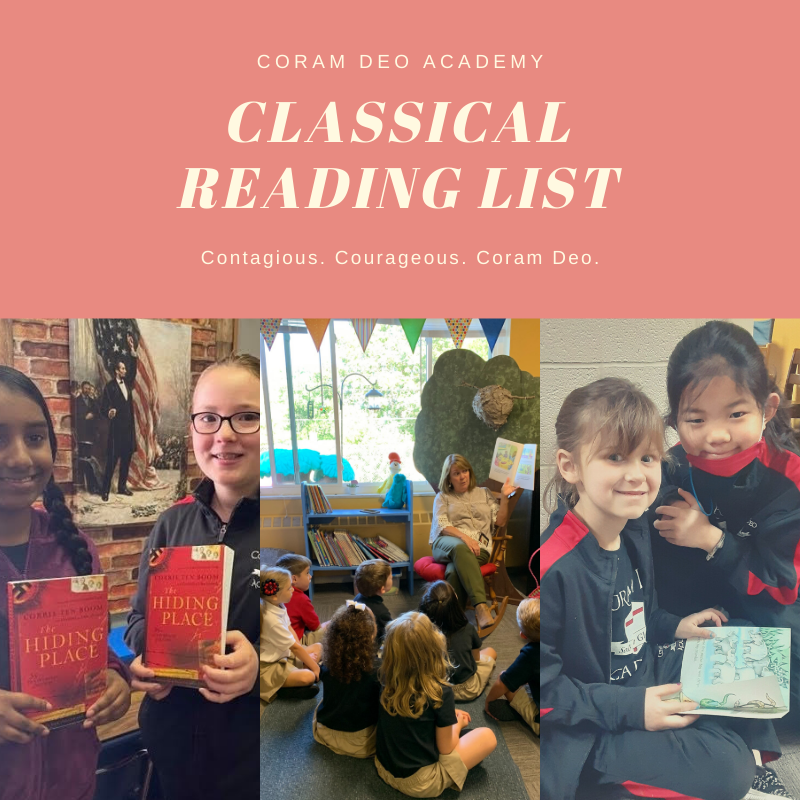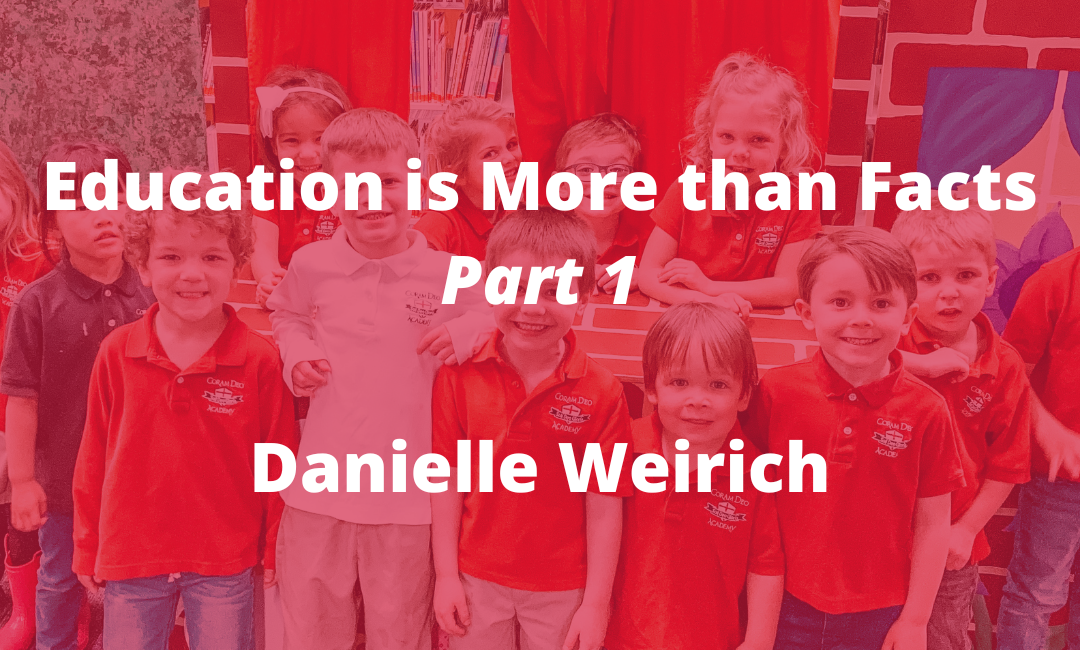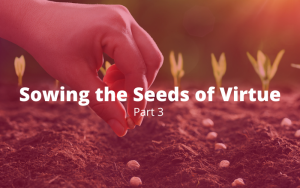by Danielle Weirich, Upper School Omnibus and Latin
Now, what I want is facts. Teach these boys and girls nothing but facts. Facts alone are wanted in life. You can only form the minds of reasoning animals upon facts: nothing else will ever be of any service to them. This is the principle on which I bring up my own children, and this is the principle on which I bring up these children. Stick to facts, sir! In this life we want nothing but facts, sir; nothing but facts!
– Mr. Gradgrind in Charles Dickens’, Hard Times
What should our children be learning at school? With so little time and so much to learn in today’s global information economy, it is tempting to follow the superintendent’s advice and “stick to the facts.” Despite this seemingly pragmatic consideration, two voices challenge us to evaluate once again the mandate of education—Charlotte Mason and Dorothy Sayers. Both Mason and Sayers agree that the bane of modernity is the dismally utilitarian assumption that the goal of education should be to accumulate facts. As a result of this misconception, both observe that our students enter the world unprepared to truly live in it.
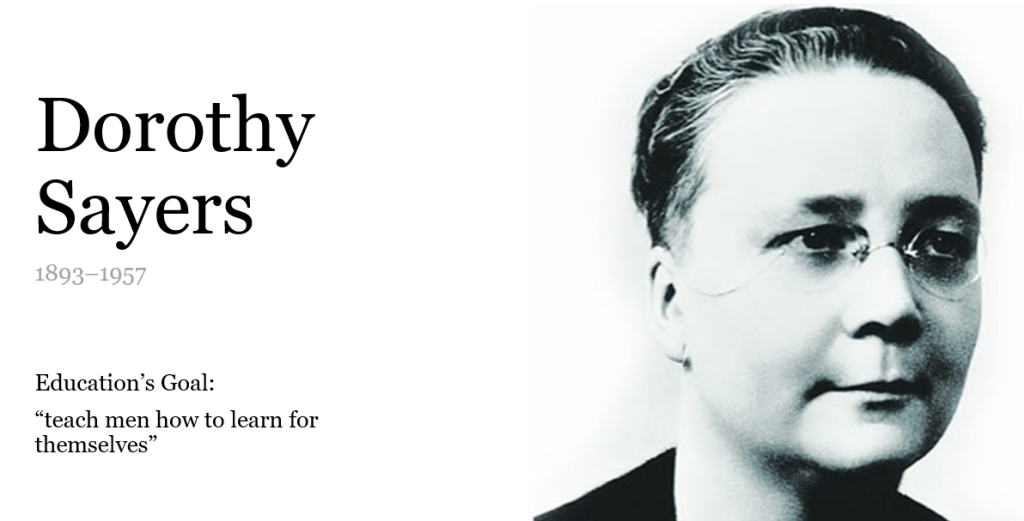
To Sayers, they lack the skills needed to self-teach, leaving them vulnerable to fallacy and failure. To Mason, they have been betrayed by their mentors, who have protected them from having to acquire the discipline and sturdiness essential to people engaged in the world. They are disenchanted and not inspired by the challenges they face. They are either on a train headed toward irrelevance or are stranded helplessly along the tracks of learning. In hopes of redeeming modern education, Mason and Sayers offer us two resources: the “instruments of education” and the “tools of learning.”
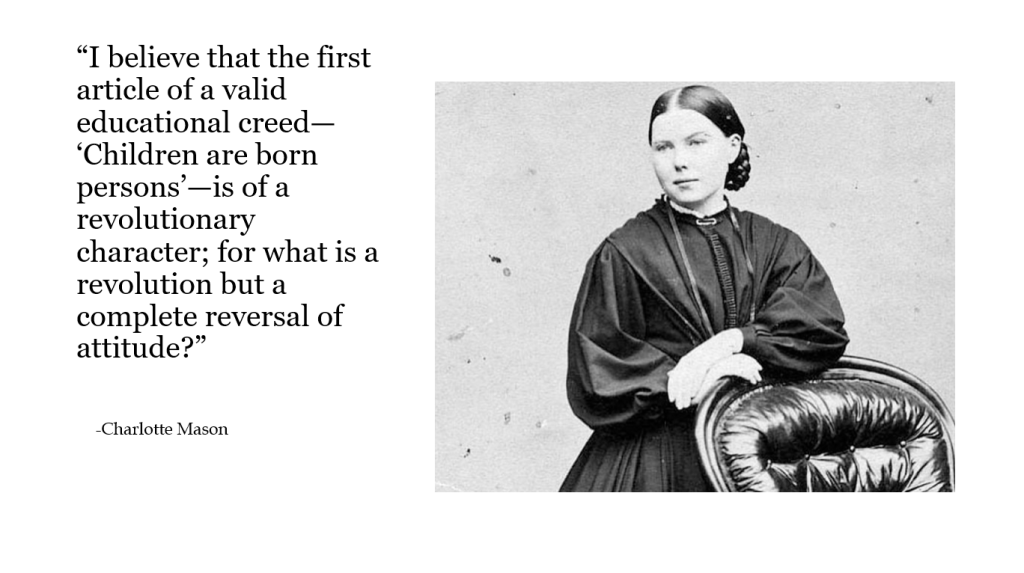
In Towards a Philosophy of Education, Charlotte Mason focuses on the work of the parent or teacher to empower the child by fostering an intentional atmosphere, cultivating purposeful habits, and presenting living ideas. Mason claims these “instruments of education” cultivate people able to engage in the real world. For this reason, Mason disagrees with the notion of primarily “child-focused” education on the grounds that it brings the world to the child’s level, and undermines their human potential.
Through the atmosphere of environment, the discipline of habit, and the presentation of living ideas, however, we may achieve the true goal of education—to enable the child “to live freely among his proper conditions” (Mason 1), bringing him into full participation with the world around him.
Instrument #1: Atmosphere
Mason’s first instrument of education, atmosphere, fosters a sincere understanding of the world without façade or subterfuge.
“It is not an environment that these [children] want, a set of artificial relations carefully constructed, but an atmosphere which nobody has been at pains to constitute,” explains Mason. “It is there, about the child, his natural element, precisely as the atmosphere of the earth is about us.” (Mason 2)
The best atmosphere for teaching is not contrived or controlled to protect the child from the tempests of life, but rather functions organically to foster the sturdiness he requires to thrive within them. The appropriate atmosphere, much like Frances Gray Patton’s popular character Miss Dove, imbues the child with the understanding that “though life [is] not easy, neither [is] it puzzling. You [learn] its unalterable laws. You [respect] them. You [become] equal to your task” (Patton 34).
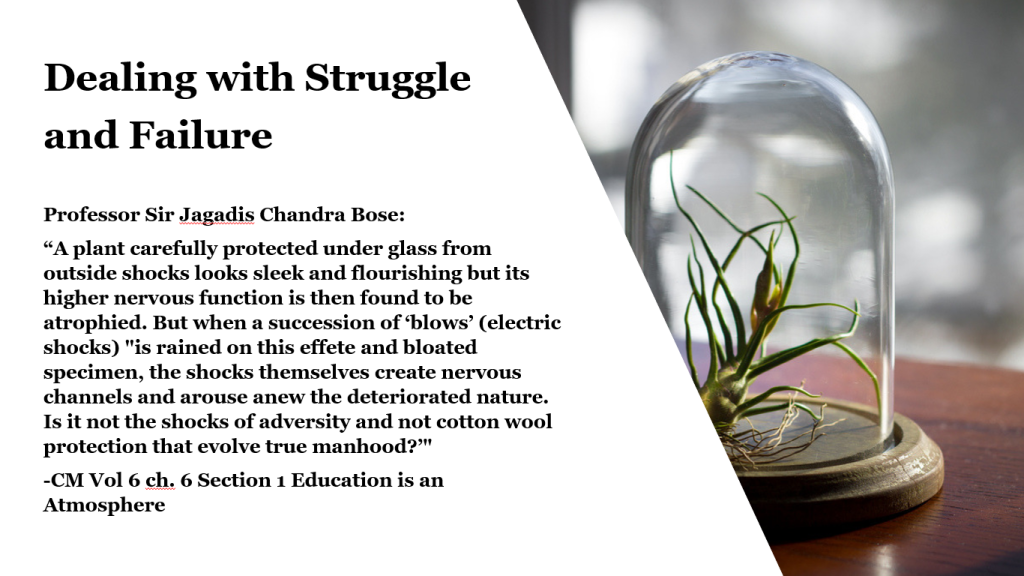
Mason’s atmosphere for teaching embraces with sincerity the truth of how things are in the world, emboldening the child to seek knowledge for the love of understanding rather than the threat of marks (Mason 2-3). With this objective in mind, Mason’s “atmosphere” infuses her remaining instruments of education, the discipline of habit and the presentation of ideas.
Instrument #2: Discipline
Mason’s second instrument of education leverages the discipline of habit to sustain a good life in the world. Both experience and science, she asserts, suggest that human thinking adapts based upon our habits. If a child must learn the “intellectual habits of the good life,” must he not do the work of learning for himself? To require a child to work out his knowledge develops the child’s habit of self-educating while fostering his attentiveness to and goodwill toward the world around him (Mason 3-4). Of course, habit-training is hard, but is nonetheless natural. The habits that parents and teachers choose to pursue, consequently, should have an end in mind—an end that aims for the child to engage productively in the world.
We have lost sight of the fact that habit is to life as rails are to transport cars. Lines of habit must be laid down toward given ends and surveyed carefully, or the jolts and delays of life become insupportable. . . . Likely, one reason for the nervous scrupulosity, hesitation, and indecision of our day is that life was not duly eased for us in the first place by those whose business it was to lay down lines of habit upon which our behavior might run easily. (Mason 4-5)

With that end in mind, Mason encourages parents and teachers to judiciously discipline the child with habits of decency, habits of propriety, and habits of religious life. These habits will enable the child to live a benevolent and righteous life.
Interested in learning more about habits? Check out our series on the Habits of the Heart and this article Sowing the Seeds of Virtue, Part 3: Training in Habits.
Instrument #3: Living Ideas
Mason’s final instrument of education nourishes life through a steady diet of living ideas. Like a body needs food, the properly educated man needs great ideas (not merely information or facts) to fuel him as he learns to engage the world around him. Contrary to Charles Dickens’s notorious character Gradgrind, Mason warns against reducing education to the mere accumulation of facts because they are not true to life.
If we inquire into any person’s habits of life such as mental preoccupation or devotion to a cause or pursuit, he will usually tell us that such and such an idea “struck” him. No phrase is more common and more promising than, ‘I have an idea’; we rise to such an opening as trout to a well-chosen fly. There is but one sphere in which the word idea never occurs, in which the conception of an idea is conspicuously absent, and that sphere is education! Look at any publisher’s list of school books and you shall find that the books recommended are carefully desiccated, drained of the least suspicion of an idea, and reduced to the driest statements of fact. (Mason 9)

How does this state of modern education reflect a world that God created, full of mysteries that we delight to uncover? Proverbs 25:2 declares,
“It is the glory of God to conceal a thing, but the honor of kings is to search out a matter.”
God has made us such that to live a good life, we must encounter defensible ideas and communicate them to one another.
Look out for the next article in the series discussing Dorothy Sayers’ three lost tools of learning!!
If you want to learn more about Mr. Anker and read his weekly column, go here. If you want to come and see the classical difference in action, send an email to info@coramdeo-in.com to learn about our next Community Leaders Breakfast.
